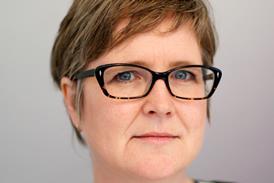This week: NHS England chief executive Simon Stevens
One of the aims of The Bedpan is to explore how the NHS affects the wider world and vice versa. This was broadly the subject of a lecture given by NHS England chief executive Simon Stevens to the Royal Society of Medicine last week. The lecture’s title was ‘The NHS and society’ but it might alternatively been called: ‘What the NHS can do for the nation, and what the nation must do the NHS.’
Following are the edited highlights of the lecture. I apologise to Mr Stevens for removing the jokes and the elegant historical and international contextualistion, as well as for any mistakes I have made in editing down the original 6,500-word transcript.
Maintaining NHS efficiency
Mr Stevens stated that: “As the health service keeps getting bigger, the marginal cost of extra investment in the NHS comes potentially at quite a high price for other public services or the disposable income of families.”
This gave the NHS an even stronger incentive to operate efficiently, he added, something it had demonstrated it is able to consistently achieve.
“In most years [since 1998] it is the additional productivity in the health service which has constituted the bulk of productivity gains in public spending. What’s more, the Office of National Statistics has just shown that in 2017 NHS productivity in England went up by 3 per cent. That is three times faster than the rest of the economy.
“But in order to be able to continue that [performance], we are going to need to ensure that we have the right capital investment. So that our frontline staff have the modern equipment and facilities with which they can productively operate.
“And frankly we start from a long way behind because [our spending lags that of other comparable countries as a proportion of GDP].
“I think we all understand that at a time when the country has been having to reduce the deficit and pay down the national debt, [why] capital investment has been constrained. But as we look out over the next five and 10 years, it is surely relevant to note that the borrowing costs for long-term investments are the lowest they have been for 30 years.
“So, part of the argument that we’ve got to make [to the Treasury in the run-up to the spending review] is how productive investment will enable us to do more and better things, not only for patients, but for the economy as a whole.”
Helping people stay at or return to work
“Around one in four people between the ages of 25 and 54 have a long-standing illness. Seventy per cent with a long-standing illness were in work, compared to 88 per cent without a long-standing illness.
“Spending on incapacity benefits is running at over £15bn, roughly eight times what is being spent on unemployment benefits. So, the question is can the NHS raise its game, when it comes to helping people stay in work. This applies not only to people with [long-term conditions] but also to particular parts of the country.
“Detailed work done by the Northern Health Science Alliance has shown the impact that additional NHS activity can have on economic activity and labour market participation in the North West and the North East of the country.
“About 30 per cent of the productivity gap between the Northern Powerhouse and the rest of England is the consequence of higher rates of ill health. They show that increasing the proportion of people in good health in their region by 3.5 per cent would reduce the employment gap between them and the rest of the England by 10 per cent.”
Rethinking the reasons for service change
“The NHS, as the largest employer in this country, is an anchor institution in many communities.
“For example, one in five people in Blackpool work for the NHS and the gross value added from health spending is 17 per cent, versus 4 per cent in London.
“The impact of hospitals as institutions in communities [such as Blackpool] is not to be underestimated.
“But the fact is that in many [deprived] communities, there is a sense that these services are at risk of being eroded.
“[This is being driven by] the concentration of certain capital-intensive equipment. And at the same time, [by] the digitisation of [healthcare] interactions which are hollowing out the district general hospital model as conceptualised by the 1962 hospital plan for England.
“So, in many parts of the country people are concerned about the future of their hospital services and that shows up as protests, it shows up as a political activity and it shows up as a sense of the tide going out from a number of these communities.
“I don’t think we should ignore those views. One of the things that the health service has got to get right over the next five to 10 years is not only thinking about the clinical case for change, which may indeed be strong in services such as stroke, major trauma and certain other disciplines, such as emergency surgery, but also to get more creative in [developing] staffing and clinical models that will enable us to sustain some of these services in communities where their absence will produce all kinds of second and third order effects in terms of jobs and economic impact and social cohesion”.
Improving the regional loyalty of medical and nursing students
“We cannot have a situation where, in the nation’s most trusted public service, people are told ‘the reason your hospital is not viable or it’s difficult to see a GP or there is a wait for the dentist is because we can’t get people to come and work here’.
“We have got to better at connecting undergraduate nursing education with the NHS as an employer in the communities where [we want those] nurses to work and the same applies [to medical students].
“I was in Lincoln last week, one of the new medical schools. If that medical school and their equivalents are not producing young doctors who want to work across the East Midlands, and in Lincolnshire then we will have failed in choosing those as locations to expand this educational opportunity.”
Supporting social care
“More than 400,000 fewer people are getting public social care support now than in 2010,” said Mr Stevens, and it was up to the NHS to help mitigate the impact of this reduction, especially when frail elderly people were discharged from hospital.
“[If we look] at what happens when people are discharged compared to the clinical assessment of what would be best for them, we can see a higher proportion of people ending up in residential and nursing homes, which is almost certainly not their personal preference [and] almost certainly costs them and the local authority.
“[This is] because of the absence of reablement, intermediate and the other interface services between the health and social care services. So, part of what we’ve got to use the additional four and a half billion pounds earmarked for primary medical and community health services for over the next five years is that interface, that mutual aid if you like, between health and social care.”
“But it would be remiss of me not to point out that half of spending on social care is not on frail older people. It’s for people with learning disabilities, physical disabilities, mental health problems [etc]. And in a week when we are having a legitimate debate about what needs to change and how to accelerate that change in what we do in learning disabilities, I think it is going to be vital for that support for local authorities, for those community and home-based services [to be there, rather than continuing to rely on] the expensive inpatient options.”
Tracking health risks
“It’s not my view that there is a fixed quantum of illness that we as a country then budget against. But it surely is the case that whatever we choose to spend on the health service, that we can affect the composition of that spending by taking action on some of the avoidable causes of ill health [so that] whatever resource we put into care is available for modern treatments at the edge of medical progress rather than dealing with billions of pounds worth of avoidable illness and disability.
“And on that front, frankly, there is cause for concern. We have seen a slow-down in improvements in life expectancy since at least 2011. The Office of National Statistics show this slow-down is happening [across developed countries], with the exception of Japan, particularly in people aged over 65. The principal contribution to that [slow-down] appears to be cardiovascular disease, respiratory [problems] and dementia.
“Seeking explanations for this is not straightforward. Countries such as Germany, Sweden and the Netherlands, which had relatively little austerity since 2008, are seeing a greater slowdown than countries such as Greece, Spain, Portugal and Ireland, where austerity was more severe.
“As we think about some of the… wider determinants of our health, it’s time to stop just tracking the flow of healthcare consumption through the NHS and instead start measuring the stock or population health risks, effectively the future costs that will be heading our way. We don’t track the extent to which that balance sheet of health risk is moving in a positive or negative direction [and this change] would focus minds and help them make the right economic trade-offs in public policy terms.”
Smoking, eating, drinking and gambling
“When we look at the particular opportunities for improving population health in this country, we can and should be doing a lot better.
“Although we have seen dramatic reductions in smoking rates, we still have around six million smokers and by some estimates about half of the difference in life expectancy is explained by differences in smoking rates. [There is] continuing concern around obesity, including childhood obesity, and – despite some good recent action, for example to set a fiscal incentive to reformulate the amount of added sugar in fizzy drinks – we still see kids in deprived areas exposed to five times more fast food outlets.
“So, we need concerted government action on our food environment if we are going to get serious about the rising burden of obesity.”
“We are [also] going to need to get serious about some of the new threats to public health, [such as] gambling addiction. There is an estimated 340,000 to 430,000 problem gamblers across the country. The industry spends £1.5bn a year on marketing and is contributing under £10m to picking up the health consequences of [their activities].
“A mandatory levy on £14bn on gambling revenues is something that in my opinion should be considered.”
Air pollution and climate change
“We have over 2,000 GP surgeries and hospitals located in zones with poisonous air [and] Public Health England estimates [air pollution will lead to] about 2.4 million cases of avoidable illness between now and 2035.
“We’ve already got more respiratory problems than the rest of Europe and according to the Royal College of Physicians up to 40,000 deaths may be associated with this.
“Just because the particulates [which constitute air pollution] are not visible to the naked eye in a way that the pea soupers that led to the Clean Air Act 1956 does not mean that we should not be taking action.
“As Paul Cosford, the medical director of Public Health England, said: ‘Imagine if something in our public water supply were causing 30-40,000 deaths a year, do we really think that we would somehow accept that this was inevitable?’ No, it would be generating a much more robust and concerted effort that is currently on the cards.
“When you think about the annual pressures on A&E departments, one of the things that fluctuate most is what is happening to respiratory admissions.”
“[The NHS has] got to be the change that we want to see. Our sustainable development unit estimate that there were about nine and a half billion road miles of NHS related travel last year, [largely from] patient travel and staff commuting.
“That’s one of the reasons why we got to get serious about digital interactions that take out travel, and why we got to be thoughtful about keeping services local.
“It’s why we’ve got to use our negotiation muscle as a buyer of services to drive changes to the supply chain.
“And, it’s why we’ve got to think about our own carbon footprint through the activities of our various road-based operations.
“We do that from a relatively strong position. Over the last decade we have cut our carbon footprint by 18.5 per cent. But, one of the things that we at NHS England are going to be working on over the balance of this year is a more ambitious set of health-producing impacts on our carbon footprint and [activites which cause] air pollution.”
…and finally
Mr Stevens also:
- Said the NHS should be “particularly attentive to is the impact of the opioid crisis” which had killed more Americans than “both world wars” and was beginning to take hold in the north of England.
- Warned of what he perceived to be the dangers of the “normalisation” of cannabis, following its legalisation for medical use. He said these was “a whole industry waiting to expand its addressable market for cannabis in this country.”
- Claimed the NHS should be “a keeper of the flame for trust and truth when it comes to scientific inquiry” at a time when “we are seeing now an enormous jump in vaccine preventable illnesses.”
- Said: “We need to see changes in the housing market and increase in the opportunity for young workers in the National Health Service to have affordable, modern homes. It cannot be right that a new nurse or a new scientist is never going to earn enough to own their own home”.
Coming up: Treasury select committee chair and former education secretary Nicky Morgan, Bishop James Newcome, and Department of Health and social care permanent secretary Sir Chris Wormald.
If there is any political or influential figure you would like me to interview, please email alastair.mclellan@wilmingtonhealthcare.com or if you are reading this on the website leave them in the comments box.
The past five Bedpans
Gambling Commission chair Bill Moyes
Ben Page, pollster to PMs (part two)
You can read all 25 Bedpans here



























6 Readers' comments